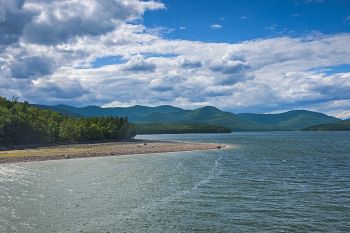Water Supply & Regulation: Difference between revisions
No edit summary |
mNo edit summary |
||
| Line 18: | Line 18: | ||
Many dams create [[reservoirs]] that store and supply water for a multitude of uses. This storage can be used to lessen the impact of a drought or water shortage. Water supply uses include fire control, agricultural production, domestic and industrial water supply, and more. In addition to storage, dams can be used to regulate fluctuations in natural stream flows. This can be helpful for domestic and agricultural uses of water as well as providing supplemental releases in times of drought to maintain aquatic habitat. | Many dams create [[reservoirs]] that store and supply water for a multitude of uses. This storage can be used to lessen the impact of a drought or water shortage. Water supply uses include fire control, agricultural production, domestic and industrial water supply, and more. In addition to storage, dams can be used to regulate fluctuations in natural stream flows. This can be helpful for domestic and agricultural uses of water as well as providing supplemental releases in times of drought to maintain aquatic habitat. | ||
Some guidance and best practices are provide below: | |||
https://planning.erdc.dren.mil/toolbox/guidance.cfm?Option=BL&BL=WaterSupply&Type=None&Sort=Default | |||
https://www.publications.usace.army.mil/portals/76/publications/engineerregulations/er_1110-2-240.pdf | |||
<!-- Revision history information --> | <!-- Revision history information --> | ||
Revision as of 02:04, 28 February 2024

|
| The Ashokan Reservoir, located in the Catskill Mountains, is one of several reservoirs that were built for the New York City water supply system in the early 20th century (Wikipedia) |
Many dams create reservoirs that store and supply water for a multitude of uses. This storage can be used to lessen the impact of a drought or water shortage. Water supply uses include fire control, agricultural production, domestic and industrial water supply, and more. In addition to storage, dams can be used to regulate fluctuations in natural stream flows. This can be helpful for domestic and agricultural uses of water as well as providing supplemental releases in times of drought to maintain aquatic habitat.
Some guidance and best practices are provide below: https://planning.erdc.dren.mil/toolbox/guidance.cfm?Option=BL&BL=WaterSupply&Type=None&Sort=Default https://www.publications.usace.army.mil/portals/76/publications/engineerregulations/er_1110-2-240.pdf
Revision ID: 7809
Revision Date: 02/28/2024
